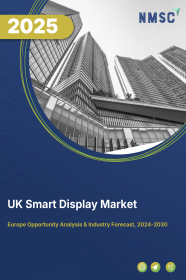𝗥𝗲𝘃𝗼𝗹𝘂𝘁𝗶𝗼𝗻𝗮𝗿𝘆 𝗧𝗲𝗰𝗵𝗻𝗼𝗹𝗼𝗴𝗶𝗲𝘀 𝗧𝗿𝗮𝗻𝘀𝗳𝗼𝗿𝗺𝗶𝗻𝗴 𝘁𝗵𝗲 𝗙𝘂𝘁𝘂𝗿𝗲 𝗼𝗳 𝘁𝗵𝗲 𝗔𝘀𝘀𝗶𝘀𝘁𝗶𝘃𝗲 𝗗𝗲𝘃𝗶𝗰𝗲 𝗜𝗻𝗱𝘂𝘀𝘁𝗿𝘆
Assistive device includes assistive, adaptive devices, equipment, gadgets, or systems specially designed for persons with disabilities and other old individuals to enable them to perform tasks. The objective of such devices is to ensure independence for such individuals and improve the quality of their lives. Approximately 1.3 billion people experience significant disability. Which represents 16% of the total world’s population (or 1 in 6 of us), as indicated by the World Health Organization. Based on the statistics released by WHO and Hopkins Medicine, 1.6 billion people experience hearing loss, with 430 million requiring access to care.
The projected number is expected to reach 2.5 billion by 2050, and at least 700 million people will have disabling hearing loss. Assistive device involves a wide range of tools, technologies and software applications personalized to help individuals with physical, sensory, cognitive or developmental challenges. It aims to overcome obstacles and facilitate greater participation and inclusion across various facets of life. With the rapid rise in the global population, the elderly demographic is also expanding significantly. This presents a substantial opportunity for the assistive device manufacturers. As per the most recent data presented by Visual Capitalist in 2022, the global population of individuals aged 65 and above stood at 771 million that constitutes 10% of the world's populace. Projections indicate an anticipated increase to 16% by 2050 and a substantial rise to 24% by the year 2100.
Assistive device includes assistive, adaptive devices, equipment, gadgets, or systems specially designed for persons with disabilities and other old individuals to enable them to perform tasks. The objective of such devices is to ensure independence for such individuals and improve the quality of their lives. Approximately 1.3 billion people experience significant disability. Which represents 16% of the total world’s population (or 1 in 6 of us), as indicated by the World Health Organization. Based on the statistics released by WHO and Hopkins Medicine, 1.6 billion people experience hearing loss, with 430 million requiring access to care.
The projected number is expected to reach 2.5 billion by 2050, and at least 700 million people will have disabling hearing loss. Assistive device involves a wide range of tools, technologies and software applications personalized to help individuals with physical, sensory, cognitive or developmental challenges. It aims to overcome obstacles and facilitate greater participation and inclusion across various facets of life. With the rapid rise in the global population, the elderly demographic is also expanding significantly. This presents a substantial opportunity for the assistive device manufacturers. As per the most recent data presented by Visual Capitalist in 2022, the global population of individuals aged 65 and above stood at 771 million that constitutes 10% of the world's populace. Projections indicate an anticipated increase to 16% by 2050 and a substantial rise to 24% by the year 2100.
𝗥𝗲𝘃𝗼𝗹𝘂𝘁𝗶𝗼𝗻𝗮𝗿𝘆 𝗧𝗲𝗰𝗵𝗻𝗼𝗹𝗼𝗴𝗶𝗲𝘀 𝗧𝗿𝗮𝗻𝘀𝗳𝗼𝗿𝗺𝗶𝗻𝗴 𝘁𝗵𝗲 𝗙𝘂𝘁𝘂𝗿𝗲 𝗼𝗳 𝘁𝗵𝗲 𝗔𝘀𝘀𝗶𝘀𝘁𝗶𝘃𝗲 𝗗𝗲𝘃𝗶𝗰𝗲 𝗜𝗻𝗱𝘂𝘀𝘁𝗿𝘆
Assistive device includes assistive, adaptive devices, equipment, gadgets, or systems specially designed for persons with disabilities and other old individuals to enable them to perform tasks. The objective of such devices is to ensure independence for such individuals and improve the quality of their lives. Approximately 1.3 billion people experience significant disability. Which represents 16% of the total world’s population (or 1 in 6 of us), as indicated by the World Health Organization. Based on the statistics released by WHO and Hopkins Medicine, 1.6 billion people experience hearing loss, with 430 million requiring access to care.
The projected number is expected to reach 2.5 billion by 2050, and at least 700 million people will have disabling hearing loss. Assistive device involves a wide range of tools, technologies and software applications personalized to help individuals with physical, sensory, cognitive or developmental challenges. It aims to overcome obstacles and facilitate greater participation and inclusion across various facets of life. With the rapid rise in the global population, the elderly demographic is also expanding significantly. This presents a substantial opportunity for the assistive device manufacturers. As per the most recent data presented by Visual Capitalist in 2022, the global population of individuals aged 65 and above stood at 771 million that constitutes 10% of the world's populace. Projections indicate an anticipated increase to 16% by 2050 and a substantial rise to 24% by the year 2100.
0 Комментарии
0 Поделились
162 Просмотры
0 предпросмотр














